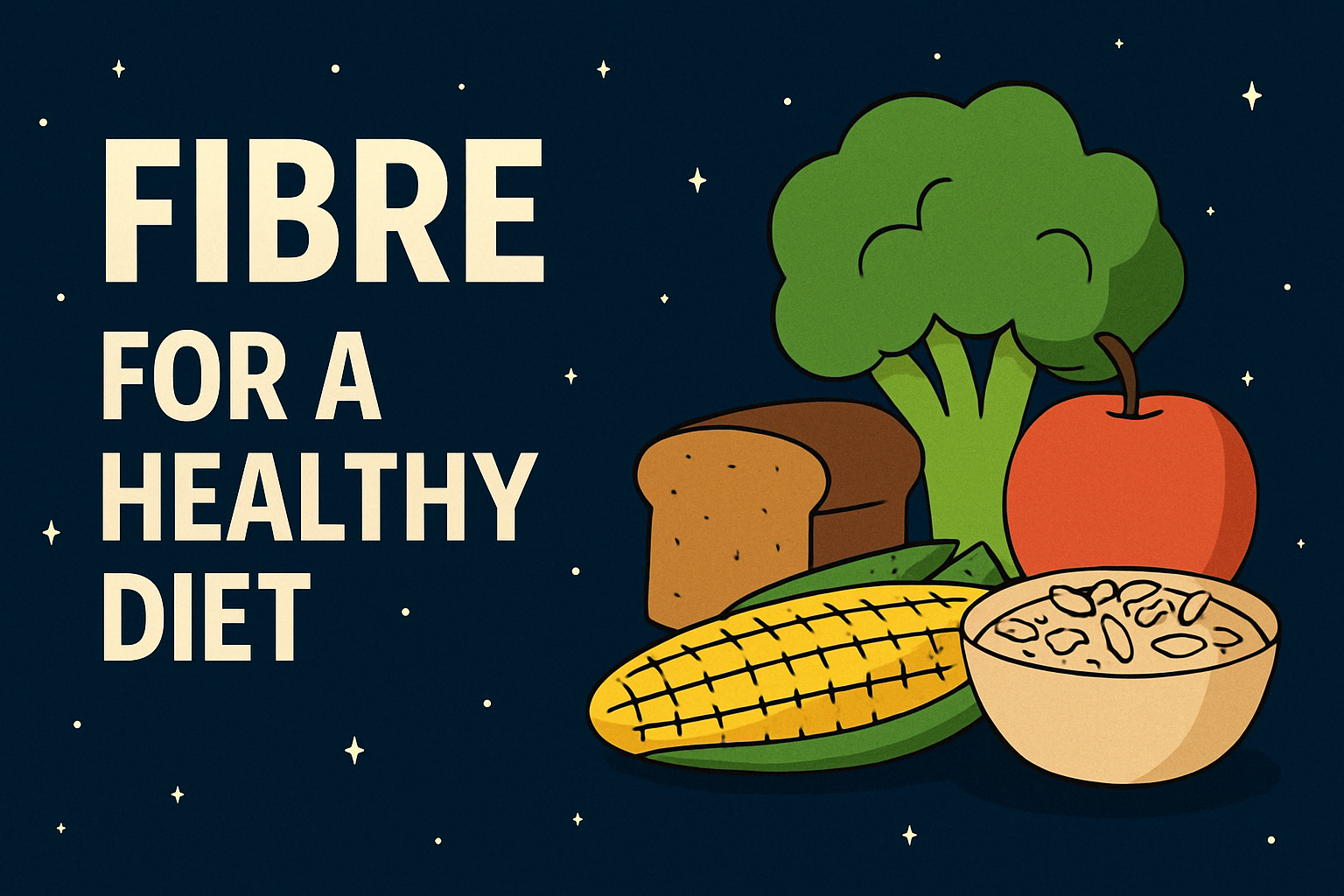If there’s one nutrient most people are missing — it’s fibre.
Despite being essential for digestion, heart health, and blood sugar control, fibre intake in the UK is far below recommended levels. The good news? It’s an easy fix with big results.
In this article, you’ll learn:
- ✅ How much fibre you actually need
- ✅ What it does for your gut and overall health
- ✅ Which foods are highest in fibre
- ✅ Easy tips to increase your daily fibre intake
- ✅ Whether fibre supplements are worth it
🍞 What Is Fibre?
Fibre is the part of plant-based food that your body can’t digest. It passes through your digestive system, feeding your good gut bacteria, bulking up stool, and keeping everything moving.
There are two main types:
- Soluble fibre – dissolves in water; helps control blood sugar and cholesterol (e.g., oats, apples, beans)
- Insoluble fibre – adds bulk to stool and prevents constipation (e.g., wholegrains, seeds, skins of fruit)
Both are important — and most fibre-rich foods contain a mix of both.
🧮 How Much Fibre Should You Eat?
According to the NHS, UK adults should aim for:
| Group | Fibre per day |
|---|---|
| Adults (16–64) | 30g |
| Children (5–16) | 20–25g |
| Over 65s | 25–28g |
The average UK adult only gets around 18g — far below the target.
💪 What Does Fibre Do for Your Health?
Fibre isn’t just about going to the toilet. It plays a role in:
✅ 1. Gut Health & Digestion
Feeds good bacteria and helps prevent:
- Bloating
- Constipation
- IBS 👉 Read: Prebiotics and Probiotics
✅ 2. Heart Health
Soluble fibre binds to cholesterol, helping lower LDL (“bad”) cholesterol.
✅ 3. Blood Sugar Control
Fibre slows digestion, reducing sugar spikes — ideal for energy and diabetes prevention.
✅ 4. Weight Management
High-fibre foods keep you fuller for longer, reducing overeating.
✅ 5. Longer Life
Studies show high-fibre diets are linked to lower risks of heart disease, stroke, bowel cancer, and type 2 diabetes.
🥦 Best High-Fibre Foods (UK-Focused)
| Food | Fibre (per 100g) |
|---|---|
| Chia seeds | 34g |
| Flaxseeds (linseeds) | 27g |
| Oats | 8.3g |
| Lentils (cooked) | 7.9g |
| Chickpeas (cooked) | 7.6g |
| Wholewheat pasta (cooked) | 4.6g |
| Broccoli (cooked) | 3.3g |
| Carrots (raw) | 2.8g |
| Apples (with skin) | 2.4g |
| Pears (with skin) | 3.1g |
| Almonds | 12.5g |
| Air-popped popcorn | 14.5g |
| Wholegrain bread (1 slice) | ~3g |
📈 Easy Ways to Eat More Fibre
- Start your day with porridge, oats, or Weetabix
- Add beans or lentils to soups and stews
- Choose wholegrain bread, rice, and pasta
- Eat fruit and veg with skins on
- Snack on nuts, seeds, or popcorn
💊 What About Fibre Supplements?
Fibre supplements (like inulin, psyllium husk, or Fybogel) can help if you struggle to meet your target through food — but they’re best used in addition to a healthy diet.
👉 Read: Probiotic Drinks – Actimel vs Yakult
👉 Read: Vitamin Deficiency Symptoms
🚽 Final Thoughts
Fibre might not sound glamorous, but it’s one of the most powerful nutrients for long-term health. And most people aren’t getting nearly enough.
If you want:
- Better digestion
- More energy
- Fewer sugar crashes
- And a happier gut…
Start by adding just one more fibre-rich food to your meals today. Your body (and your microbiome) will thank you.
According to the NHS, adults in the UK should aim for 30g of fibre a day — but most fall well short.
👉 Like this article? Share it on Facebook 💬

Leave a Reply